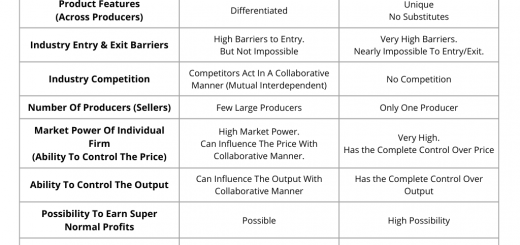Difference Between Right Issue and Stock Split
Differences of Right Issue and Stock Split
Differences between Right Issue and Stock Split are explained in the below table,
| Right Issue | Stock Split |
|---|---|
A Rights Issue is an offer provided to its existing shareholders to subscribe to the shares at a discounted price. | A stock split is when the company increases the number of its shares to boost the stock’s liquidity. |
Share offer with discounted price. | Share offer freely (without any price for shareholder). |
At the post-rights issue, the number of shares increases, and the value of the share will be diluted. As a result, the share price in the market will decrease. | At the post-share split, the price of the stock will decrease as proportionate to the split multiple. |
A rights issue is mainly offered to raise additional capital. | A stock split is mainly done to increase the number of company shares to boost the stock’s liquidity. |
The rights offer can be fully utilized, partially accepted, or completely rejected. | There is no such option or need for those options. |
The equity percentage will be changed if shareholders ignore the right or sell the right to other parties. | Equity percentage will remain the same as before after the stock split. |
The right issue involves cash inflow to the company. | Stock split does not involve any cash inflow to the company. |
Example of Right Issue, The company needs to raise additional capital. Debt is not an option for the company. Hence, the company offers the right issue where the existing shareholders can buy additional shares at a discounted price to the market price. The shareholder has the option to either accept the offer, sell the right to any other party or ignore it. Shareholders’ equity percentage will remain the same only if they accept the offer. | Example of Stock Split, The company management thinks that the stock price of the company is high, hence stocks are less liquid. Hence they decided to move ahead with a stock split, which increases the number of company shares, without changing the company’s equity value. |
Differences between Right Issue and Stock Split are explained in the below points,
- A Rights Issue is an offer provided to its existing shareholders to subscribe to the shares at a discounted price.
On the other hand, a stock split is when the company increases the number of its shares to boost the stock’s liquidity. - In the right issue, a share offer is done with discounted price.
But in a stock split, share offer freely (without any price for the shareholder). - At the post-rights issue, the number of shares increases, and the value of the share will be diluted. As a result, the share price in the market will decrease.
In opposition, at the post-share split, the price of the stock will decrease as proportionate to the split multiple. - A rights issue is mainly offered to raise additional capital.
In opposition, a stock split is mainly done to increase the number of company shares to boost the stock’s liquidity. - The rights offer can be fully utilized, partially accepted, or completely rejected.
But for a share split, there is no such option or need for those options. - The equity percentage will be changed if shareholders ignore the right or sell the right to other parties.
But in a share split, the equity percentage will remain the same as before after the stock split. - The right issue involves cash inflow to the company.
But stock split does not involve any cash inflow to the company. - Example of Right Issue: The company needs to raise additional capital. Debt is not an option for the company. Hence, the company offers the right issue where the existing shareholders can buy additional shares at a discounted price to the market price. The shareholder has the option to either accept the offer, sell the right to any other party or ignore it. Shareholders’ equity percentage will remain the same only if they accept the offer.
Example of Stock Split: The company management thinks that the stock price of the company is high, hence stocks are less liquid. Hence they decided to move ahead with a stock split, which increases the number of company shares, without changing the company’s equity value.
Learn More with LearnBusinessConcepts.com
- Initial Public Offering (IPO): Explanation, Steps & Examples
- Advantages & Disadvantages of Initial Public Offering (IPO)
- Bonus Issue: Explanation, Calculation & Real World Examples
- Advantages and Disadvantages of Bonus Issue


